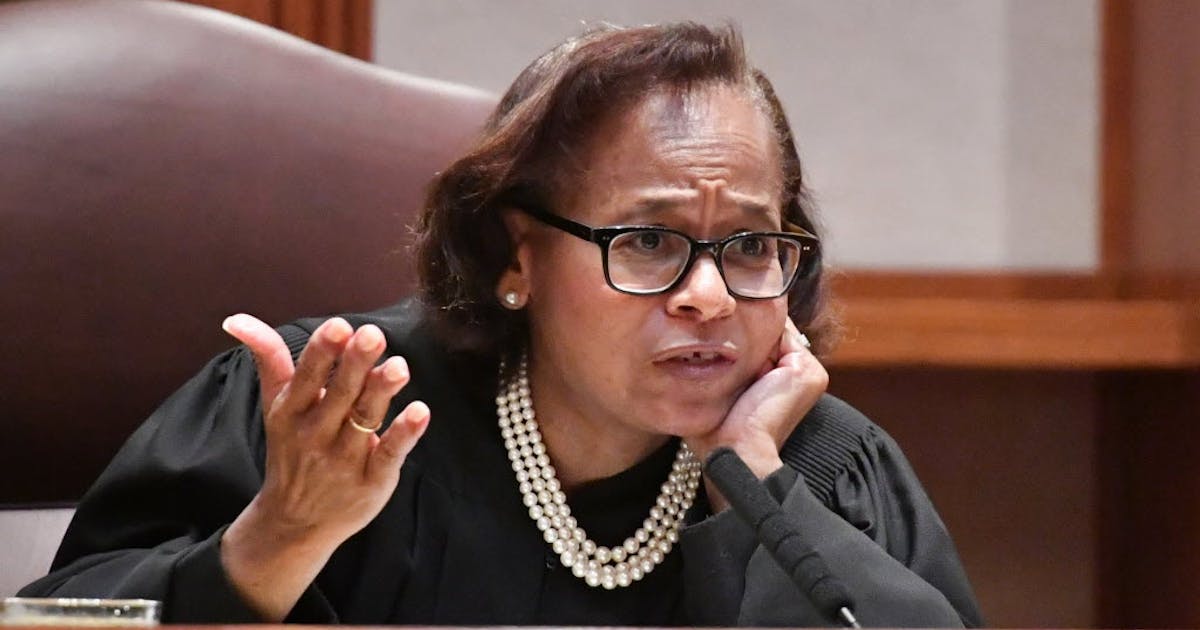
Minnesota Supreme Court Justice Natalie Hudson will be the new chief justice, Gov. Tim Walz announced Wednesday, making her the first person of color to lead the state judiciary.
To fill the vacancy created by her elevation, Walz also announced the appointment of his former staff lawyer, Karl Procaccini, to the seven-member court. Procaccini, 40, has not served as a judge. Until late June, he was general counsel and deputy chief of staff to Walz.
Hudson, 66, succeeds Chief Justice Lorie Gildea, who announced her surprise retirement from the bench in June. Gildea, 61, will leave Oct. 1.
The chief justice sets the tone in running the state’s highest court and serves as the head of the judicial branch across 87 counties and the appellate courts. Hudson will oversee the expansion of camera access in courtrooms beginning in January because of a state Supreme Court decision earlier this year.
Hudson has already made a mark in a career that has spanned public and private practice as well as academia and the judiciary. In 2018, she wrote a majority opinion allowing a school segregation case to proceed.
At her swearing-in to the high court in 2015, Hudson said, “How we treat those on the margins of society, those with no lobbying group, says volumes about our character and values as a judicial system.”
In June 2002, Gov. Jesse Ventura appointed Hudson to the state Court of Appeals where she remained for 13 years, writing more than 1,000 opinions. In 2015, Gov. Mark Dayton appointed her to the state Supreme Court as the successor to Justice Alan Page, the state’s first Black justice who retired when he turned 70.
Hudson graduated from Arizona State University and earned her law degree from the University of Minnesota. She worked in the criminal appellate division of the state Attorney General’s Office and as an assistant dean at Hamline University School of Law. She worked in civil litigation, as the St. Paul city attorney and with Southern Minnesota Regional Legal Services.
She was re-elected to a six-year term last November but will reach the mandatory retirement age in January 2027, potentially allowing Walz to appoint her successor as chief.
Procaccini was a less conventional choice for the state’s high court. He spent four years in the governor’s office and helped craft executive orders during the COVID-19 pandemic. Procaccini left the governor’s office in June to take a temporary position as a visiting professor at the University of St. Thomas School of Law.
Procaccini earned a degree from Harvard Law School in 2010, clerked for two federal judges and worked for several years at the Greene Espel firm in Minneapolis. He is a native of Connecticut with an undergraduate degree in social studies from Harvard and a degree in international law from the American University in Cairo.
The appointments do not require confirmation.
Since taking office in 2019, Walz has appointed two new justices to the court, both of them white men. In addition to Procaccini, he appointed Justice Gordon Moore in 2020.
Procaccini’s appointment tips the gender balance of the court to four men and three women.
Gildea surprised many when she announced in June that she would step down from the court on Oct. 1 after 13 years in the top job. Gildea was 44 when she went on the court in January 2006 as an associate justice appointed by Gov. Tim Pawlenty, who then elevated her to chief in 2010.
She had served less than four months as a Hennepin County District Court judge when Pawlenty put her on the state’s highest court.
The appointments are unlikely to be the last for Walz. Justice G. Barry Anderson, also appointed by Pawlenty, will reach mandatory retirement age in October 2024.
Of the remaining justices, Dayton appointed Margaret Chutich, Anne McKeig and Paul Thissen.
This is a developing story; check back for updates.
This post was originally published on this site be sure to check out more of their content.









